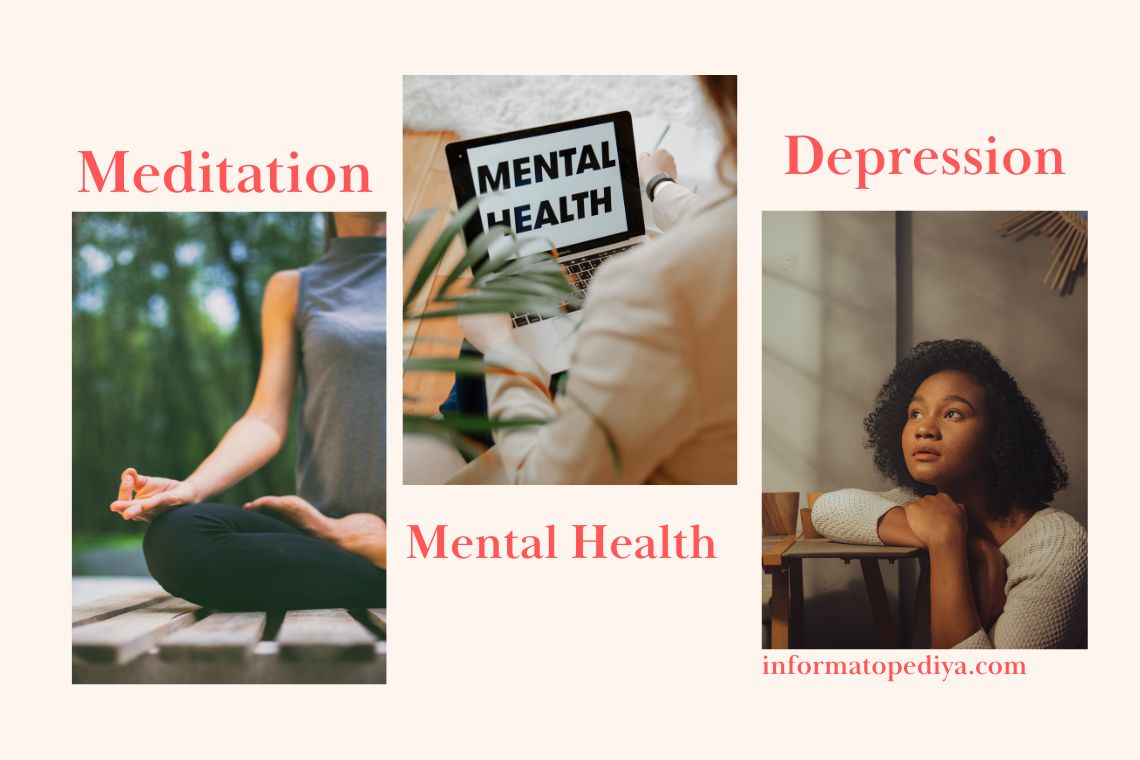
A Step-by-Step Guide to Meditation and Its Impact on Mental Health, Especially for Depression Patients
Table of Contents
Introduction:
Mental health is a crucial aspect of our overall well-being, and for individuals battling depression, finding effective coping mechanisms is of utmost importance. In recent years, meditation has gained recognition for its positive impact on mental health, offering a holistic approach to managing depression symptoms. This article aims to provide a comprehensive, step-by-step guide to incorporating mind training into one’s routine and exploring its profound effects on mental well-being.
History of Meditation:
Before delving into the practical steps, it’s essential to understand the historical roots of mind-relaxing exercise. Dating back thousands of years, exercise has been a staple in various cultures and religions, including Buddhism and Hinduism. It was initially practiced as a means of spiritual growth, but over time, its benefits for mental health have become increasingly recognized.
The Science Behind Mindfulness and Mental Health:
Numerous studies have demonstrated the positive impact of exercise on mental health, especially for individuals dealing with depression. Mindtraining practices, such as mindfulness and loving-kindness meditation, have been shown to reduce symptoms of depression, anxiety, and stress. These practices work by promoting changes in the brain’s neural pathways, enhancing emotional regulation, and fostering a sense of calm.
Step 1: Understanding Meditation Techniques
Beginners often find meditation daunting, so it’s crucial to start with a clear understanding of various exercise techniques. Mindfulness training, transcendental training, and guided therapy are just a few examples. Tailor your choice to your comfort and preferences.
Step 2: Creating a Meditation Space
Establishing a dedicated meditation space helps create a conducive environment for your practice. Choose a quiet, comfortable area free from distractions, ensuring a peaceful and focused meditation experience.
Step 3: Setting Realistic Goals
Approach meditation with realistic expectations. Set achievable goals, starting with shorter sessions and gradually extending the duration as you become more comfortable with the practice. Consistency is key.
Step 4: Focusing on Breath and Mindfulness
The core of many meditation practices lies in focusing on the breath and cultivating mindfulness. By concentrating on your breath, you anchor your attention to the present moment, helping to alleviate depressive thoughts and promote a sense of inner peace.
Step 5: Embracing Loving-Kindness Meditation
Loving-kindness Meditation involves directing positive and compassionate thoughts towards oneself and others. This practice can be particularly beneficial for individuals with depression, fostering self-love and empathy.
1. Benefits of Meditation for Mental Health:
In this section, the article will explore the various positive impacts that meditation has on mental health. It could cover aspects such as reduced stress, improved emotional regulation, enhanced focus, and the release of feel-good hormones like serotonin and dopamine. Using reputable government websites and research articles as references will add credibility to these benefits.
2. Common Challenges and How to Overcome Them:
Mindtraining is not without its challenges, especially for beginners. This subheading would discuss common obstacles individuals might face, such as a wandering mind or difficulty maintaining a regular practice. It would then offer practical tips and solutions to overcome these challenges, emphasizing the importance of persistence and patience.
3. Real-life Success Stories: Meditation and Depression:
Sharing real-life success stories can add a personal touch to the article, making it relatable to readers. These stories could highlight how individuals dealing with depression have experienced positive changes in their mental health through consistent contemplation practices. Ensure that these stories are authentic and supported by references or testimonials.
4. Integrating Meditation into Your Daily Routine:
This section would offer practical advice on how readers can seamlessly incorporate meditation into their daily lives. It could include tips on finding the right time, creating a structured routine, and making the mind exercise a habit. The goal is to make relaxing accessible and achievable for individuals with busy schedules.
Conclusion:
In conclusion, integrating deep thought into your routine can be a transformative journey towards better mental health, especially for those grappling with depression. The historical roots, scientific evidence, and practical steps outlined in this guide aim to empower individuals to embark on a path of self-discovery and healing through the ancient art of meditation.
References:
1. National Institute of Mental Health, “Depression.” https://www.nimh.nih.gov/health/topics/depression/index.shtml
2. Harvard Health Publishing, “Meditation: A simple, fast way to reduce stress.” https://www.health.harvard.edu/mind-and-mood/meditation-a-simple-fast-way-to-reduce-stress
3. Mayo Clinic, “Meditation: A simple, fast way to reduce stress.” https://www.mayoclinic.org/tests-procedures/meditation/about/pac-20385120







Hi my family member I want to say that this post is awesome nice written and come with approximately all significant infos I would like to peer extra posts like this